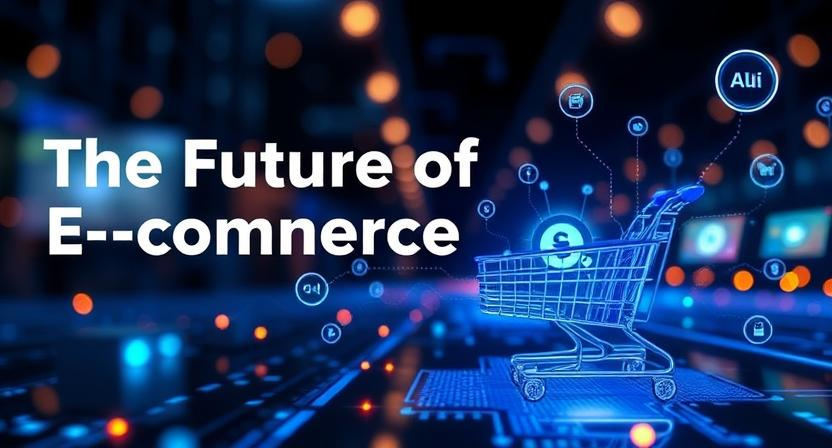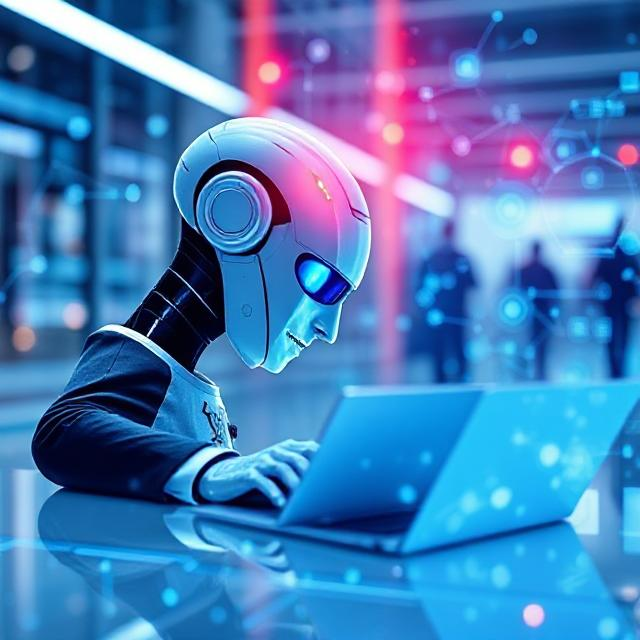E-commerce has been evolving rapidly over the past decade, and as technology advances, consumer behavior shifts, and global trends change, the future of e-commerce continues to take shape. Businesses need to stay ahead of these trends to remain competitive in the digital marketplace. This article explores the key trends and predictions that will shape the future of e-commerce in the coming years.
1. The Rise of AI and Automation in E-Commerce
Artificial intelligence (AI) and automation are transforming how online retailers operate. AI-driven chatbots, personalized recommendations, and predictive analytics are enhancing customer experiences and improving efficiency. Automation is streamlining inventory management, order fulfillment, and customer support, reducing human intervention and costs.
Why It’s Important
- AI enhances customer experience with personalized recommendations.
- Automation improves operational efficiency and reduces costs.
- Predictive analytics help businesses make data-driven decisions.
Future Predictions
- More businesses will integrate AI-powered chatbots for instant customer support.
- Machine learning will refine personalization to an unprecedented level.
- Automated warehouses and drone deliveries will become more common.
2. The Expansion of Voice Commerce
Voice search and smart assistants like Alexa, Google Assistant, and Siri are changing how people shop online. Consumers are increasingly using voice commands to search for products, compare prices, and place orders.
Why It’s Important
- Hands-free shopping is convenient for users.
- Voice search is growing rapidly, requiring businesses to optimize their platforms.
Future Predictions
- More e-commerce platforms will optimize for voice search.
- AI will make voice assistants more intuitive and human-like.
- Voice commerce will integrate seamlessly with smart home devices.
3. Growth of Augmented Reality (AR) Shopping Experiences
Augmented reality (AR) is revolutionizing the e-commerce industry by providing interactive and immersive shopping experiences. Customers can visualize products in their real environment before making a purchase, reducing returns and increasing satisfaction.
Why It’s Important
- Enhances online shopping by allowing customers to try products virtually.
- Reduces uncertainty and improves purchase confidence.
Future Predictions
- More fashion and home décor brands will adopt AR shopping.
- AR filters will become standard for product previews.
- AI-powered AR will offer hyper-personalized shopping experiences.
4. Social Commerce: Shopping via Social Media
Social media platforms like Instagram, Facebook, and TikTok are becoming powerful e-commerce channels. With integrated shopping features, consumers can browse and buy products directly from their social feeds.
Why It’s Important
- Shortens the buying journey with direct social media purchases.
- Encourages impulse buying through visually engaging content.
Future Predictions
- More platforms will introduce in-app checkout features.
- Influencer-driven commerce will become a dominant sales channel.
- Brands will invest more in shoppable video content.
5. Sustainability and Ethical Shopping
Consumers are becoming more conscious of environmental and ethical issues, demanding sustainable and ethically produced products. E-commerce businesses must adapt by offering eco-friendly packaging, fair trade goods, and transparent supply chains.
Why It’s Important
- Consumers are willing to pay more for sustainable products.
- Reduces environmental impact and enhances brand reputation.
Future Predictions
- Eco-friendly packaging will become a standard requirement.
- More brands will adopt carbon-neutral or zero-waste initiatives.
- Blockchain technology will ensure supply chain transparency.
6. Subscription-Based E-Commerce Growth
Subscription services are booming, offering customers convenience and businesses recurring revenue streams. From beauty boxes to meal kits, subscription models are gaining popularity across industries.
Why It’s Important
- Provides consistent revenue for businesses.
- Enhances customer loyalty and retention.
Future Predictions
- AI-driven personalization will make subscription boxes more appealing.
- More industries will adopt subscription-based models.
- Flexible subscription plans will become the norm.
7. Rise of Mobile Commerce (M-Commerce)
Mobile shopping continues to dominate as smartphones become the primary online shopping tool. Businesses must optimize their websites and apps for seamless mobile experiences.
Why It’s Important
- A large portion of online sales now comes from mobile users.
- Mobile-friendly websites improve user experience and conversion rates.
Future Predictions
- Mobile payment solutions will become more secure and widespread.
- Progressive web apps (PWAs) will enhance mobile shopping experiences.
- AI-driven mobile personalization will increase engagement.
8. The Power of Influencer and User-Generated Content
Influencers and user-generated content (UGC) are shaping consumer purchasing decisions. Authentic reviews, testimonials, and influencer collaborations build trust and boost sales.
Why It’s Important
- Consumers trust peer recommendations more than traditional ads.
- UGC creates social proof and enhances brand credibility.
Future Predictions
- More brands will integrate influencer marketing into their strategies.
- AI-driven influencer matching will refine partnerships.
- UGC will become a key component of e-commerce marketing.
Conclusion
The future of e-commerce is being shaped by technological advancements, shifting consumer behaviors, and new business models. AI, automation, voice commerce, AR shopping, and social commerce will redefine the industry, while sustainability and subscription services will play a significant role in consumer preferences. To stay competitive, businesses must embrace these trends, adopt innovative strategies, and continuously evolve to meet the changing demands of the digital marketplace. By staying ahead of these trends, e-commerce businesses can thrive in the ever-evolving landscape.






Leave a Reply